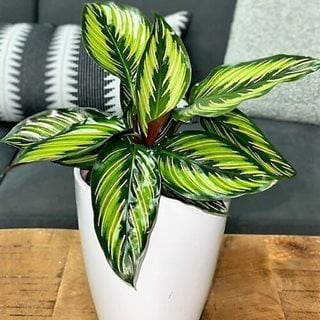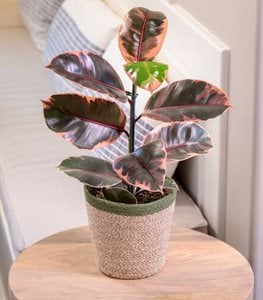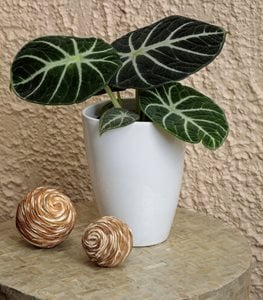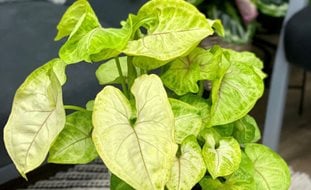24 Best Indoor Plants For Any Location
Choose the right type of indoor plant for your home or officeDoes your green thumb turn to stone when it comes to growing plants indoors? Don’t give up hope. Anyone can master indoor gardening by choosing good indoor plants for the different microenvironments in the home, whether it’s a warm, humid room or a drafty low-light corner. And some indoor plants are tough enough to survive just about anywhere.
Selecting a plant with light requirements that match the location can be one of the most important factors in the success—or failure—of growing a healthy plant.
On this page are indoor plants for:
LOW LIGHT:
Plants suitable for north-facing windows or locations along interior walls. Many plants labeled for low-light conditions tolerate it and grow slower, but may do better in slightly brighter or medium light. (See more houseplants for low-light.)MEDIUM/BRIGHT, INDIRECT/FILTERED LIGHT:
Plants suitable for east-facing windows, south- or west-facing windows that have sheer coverings over them, or 3 to 5 feet from south- or west-facing windows.BRIGHT/HIGH LIGHT:
Plants suitable for unobstructed south- or southwest-facing windows. (See more houseplants for bright-light.)
BEST INDOOR PLANTS FOR LOW LIGHT
POTHOS (Epipremnum aureum)
Size: Vines 6 to 10 feet long
Water: Allow the top inch of soil to dry out between watering.
Fertilize: Light feeders, so use a balanced liquid fertilizer every 1 to 3 months.
One of the easiest houseplants to grow. This tropical vine comes in a variety of foliage colors and patterns. Pothos can be trimmed and kept compact, allowed to trail from hanging baskets, or trained up vertical supports. Learn more about growing pothos.
PHILODENDRON (Philodendron spp.)
Size: Vines to 8 feet long
Water: Prefers evenly moist soil, but not soggy. Water if top inch of soil is dry.
Fertilize: Apply a water-soluble houseplant fertilizer from spring through fall.
Another very easy-to-grow houseplant, similar to pothos. Tolerates low light, but will grow faster in medium to bright light. Foliage comes in a variety of sizes, shapes, and colors. Philodendrons can also be grown outdoors in mild climates. Learn more about how to grow philodendron plants.
PRAYER PLANT (Calathea spp.)
Size: Up to 3 feet tall
Water: Keep evenly moist. Don't allow to become overly soggy or dry out completely. May be sensitive to tap water, so use distilled or filtered water.
Fertilize: Once a month from spring through fall.
Also called rattlesnake plant, peacock plant, or zebra plant, this popular houseplant is grown for its decorative foliage in an assortment of patterns, colors, and shapes. Prayer plants don't like their roots disturbed, so repot in early spring only if rootbound. Learn more about how to grow calathea plants.
BIRD'S NEST FERN (Asplenium nidus)
Size: Up to 2 feet tall
Water: Keep soil evenly moist, but not soggy. Water at the edge of the rosette so water doesn't pool in the center and cause rot. Yellow leaves signal overwatering.
Fertilize: Fertilize every 2 to 4 weeks from spring until fall with a diluted houseplant fertililzer.
This tropical fern makes a stunning centerpiece for a table or plant stand. New fronds unfurl from the center of the plant, so the shape remains elegant and upright. An ideal plant for a steamy bathroom, bird's nest ferns like moderate humidity and temperatures around 70 degrees F. Learn more about different types of ferns.
ZZ PLANT (Zamioculcas zamiifolia)
Size: 2 to 3 feet tall
Water: ZZ plants store water in their semi-succulent stems so you may only need to water every couple weeks. Overwatering can do more damage than underwatering, so don't allow the soil to become soggy.
Fertilize: They are light feeders, so only fertilize every three months or so.
The naturally shiny leaves of the ZZ plant require little effort to maintain their good looks. Simply dust them off with a damp cloth (leaf sprays may damage the foliage). ZZ plants also do well in medium/bright, indirect light. Keep in mind that all parts of the plant are toxic, so keep away from children and pets. Learn more about how to grow ZZ plants.
PARLOR PALM (Chamaedorea elegans)
Size: 2 to 4 feet tall
Water: Avoid overwatering, but keep the soil evenly moist. Water when the surface of the soil feels dry.
Fertilize: Fertilize monthly in spring and summer.
Bring tropical flair indoors with a parlor palm. A popular choice for dimly lit foyers and offices. Typically the only pruning needed is the removal of lower fronds that naturally turn brown over time. Trimming healthy green fronds will stop growth completely. If you do prune, remove the entire stem.
PEACE LILY (Spathiphyllum spp.)
Size: 1 to 6 feet tall
Water: Keep soil evenly moist, but not soggy. Don't allow the soil to dry out completely. Reduce water in the winter when plant growth slows.
Fertilize: Apply a water-soluble houseplant fertilizer at half strength every two months.
Pure white spathes surrounding creamy white flower spikes bloom from mid-spring through late summer. Peace lilies love warmth and humidity. Avoid exposing them to temperatures below 55 degrees F. Learn more about how to grow peace lily plants.
CHINESE EVERGREEN (Aglaonema spp.)
Size: 2 to 3 feet tall
Water: Keep soil evenly moist, but not soggy. Reduce water in the winter when plant growth slows. Wilted leaves are a sign of underwatering; overwatering may cause stem or root rot.
Fertilize: Monthly with a diluted liquid fertilizer from early spring through fall.
Chinese evergreens hate cold drafts and temperatures below 55 degrees F. Locate your plant away from drafty doorways, windows, and air-conditioning vents. Plants with darker green leaves can tolerate less light, while variegated varieties prefer brighter light.
CAST IRON PLANT (Aspidistra elatior)
Size: 15 to 24 inches tall
Water: Water moderately in spring and summer, less often in fall and winter. Allow the soil to dry between watering.
Fertilize: Once a month from spring through fall.
Cast iron plants are extremely slow growing and can take years to reach their full height. Cast iron plants are almost impervious to neglect and aptly named for their tough-as-nails constitution. A good choice for dimly lit rooms and rooms with northern exposure.
See the entire leafjoy® Cocoon® Collection of low-light houseplants from Proven Winners.
BEST INDOOR PLANTS FOR MEDIUM LIGHT
FIDDLE LEAF FIG (Ficus lyrata)
Size: Up to 10 feet tall
Water: From spring to fall, water when the top inch of soil feels dry, more sparingly in winter.
Fertilize: Apply a high-nitrogen fertilizer that includes micronutrients monthly from spring through fall. Don't feed during winter months.
Fiddle-leaf figs instantly give any room a jungle-like vibe. They grow very slowly, but can eventually reach the ceiling. With a reputation for being finicky, this cold-sensitive rainforest native needs just the right conditions to thrive indoors. Prefers east-facing, sunny windows; unobstructed late day sun in a west- or south-facing window may burn the leaves. Learn more about how to grow fiddle-leaf figs.
RUBBER PLANT (Ficus elastica)
Size: Up to 10 feet tall
Water: Keep soil evenly moist. Water when it becomes slightly dry to the touch.
Fertilize: Fertilize every two weeks when actively growing from spring through fall; monthly in winter.
Rubber plants can threaten to outgrow a room, but can be kept in check by pruning off the top at the central stem. This will encourage growth of side branches. Keeping your plant in a smaller pot will also curb its growth. Learn more about how to grow rubber plants.
TRADESCANTIA (Tradescantia spp.)
Size: 3 to 36 inches tall, 9 to 24 inches wide, can trail to 36 inches
Water: Tradescantias prefer moist soil, but avoid overwatering to prevent root rot.
Fertilize: Use a balanced liquid houseplant fertilizer monthly.
An easy-to-grow, trailing plant that is great for beginners. Perfect for use in a hanging basket or even spilling from a regular planter. If your plant becomes leggy over time, prune it back by pinching off the stems directly above a leaf node. Learn more about how to grow tradescantia plants.
MONSTERA (Monstera spp.)
Size: 3 to 20 feet tall
Water: Deeply water every 1 to 2 weeks, or whenever the soil feels dry. Drooping leaves often mean your plant needs a drink.
Fertilize: Not necessary, but an occasional dose of all-purpose houseplant food during the spring and summer will encourage more vigorous growth.
Popular houseplants prized for their unique, holed leaves. They come in various types, sizes, and growth habits, making them versatile for indoor decor. Monsteras add a tropical touch to spaces and are suitable for different growing styles. Learn more about growing monstera plants.
WATERMELON PEPEROMIA (Peperomia argyreia)
Size: 6 to 8 inches tall
Water: Water moderately, allowing the soil to become dry to the touch before rewatering. Overwatering can cause root rot.
Fertilize: Apply a balanced 20-20-20 liquid fertilizer monthly during the growing season, from mid-March to November. Cease fertilizing in winter when plant growth slows down.
Looking like a potful of mini watermelons atop red stems, this green-and-silver striped peperomia begs to be noticed. A nearly foolproof houseplant for beginners, it rarely needs repotting and doesn’t mind a bit of neglect. Learn more about how to grow peperomia plants.
POLKA DOT PLANT (Hypoestes phyllostachya)
Size: Up to 12 inches tall
Water: Keep the soil consistently moist, but not soggy. Too little water causes the leaves to wilt.
Fertilize: Apply a diluted liquid fertilizer every two weeks from early spring through late summer.
A charming little foliage plant with cheery pink speckles over deep-green leaves. In addition to pink, cultivars sporting white or red dots are also available. Pinch back the stems of too tall or leggy plants to encourage bushier growth. Learn more about how to grow polka dot plants.
AFRICAN VIOLET (Saintpaulia ionantha)
Size: Usually under 4 inches tall
Water: Water when soil feels slightly dry to the touch. Try not get the leaves wet, which can cause spotting.
Fertilize: Apply a specialized African violet fertilizer every 2 to 3 weeks, or according to package directions.
Thousands of cultivars give you a choice of almost any flower color, as well as single, double, and bicolored blooms. African violets will bloom repeatedly during spring and summer when given enough sunlight, with the blooms lasting up to a few weeks. Learn more about how to grow African violet plants.
AIR PLANT (Tillandsia spp.)
Size: Varies, depending on the variety
Water: Run the plants under water a few times a week. If the leaves are curled more than normal, submerge in a bowl of water overnight.
Fertilize: Use an epiphyte fertilzer spray weekly, or according to package directions.
Air plants put down no roots and receive nutrients and moisture through their leaves. Once an air plant blooms, it will produce offshoots that will become new plants in one to two years. Learn more about how to grow air plants.
BEST INDOOR PLANTS FOR BRIGHT LIGHT
ALOCASIA (Alocasia hybrids)
Size: 2 to 6 feet tall and wide, depending on variety
Water: Water regularly during the growing season (spring through fall) to keep the soil evenly moist, but not soggy; less frequently during winter.
Fertilize: Feed with a diluted liquid houseplant fertilizer one to two times per month during spring and summer.
Given the right conditions, these lush and leafy tropical plants can thrive indoors in well-lit areas, making them a bold focal point of any sunny room. In addition to bright light, alocasias also require a humid environment, so keep plants well-hydrated by using a humidifier or misting the leaves regularly. Learn more about growing alocasia plants.
SNAKE PLANT (Sansevieria spp.)
Size: 6 to 20 inches tall
Water: Allow the top inch of soil to dry completely before watering. Snake plants store water, so it's almost impossible to underwater them.
Fertilize: Not necessary, but an occasional dose of all-purpose houseplant food during the spring and summer will encourage more vigorous growth.
Also called mother-in-law's tongue, this hardy houseplant is almost impossible to kill. Although it prefers bright light, it will also persevere through dim lighting, temperature fluctuations, and lapses in watering. Learn more about growing snake plants.
JADE PLANT (Crassula ovata)
Size: Dwarf varieties, 12 to 18 inches tall
Water: Allow the soil to dry out between waterings, and water only sparingly in the winter months. Too much moisture can cause stem and root rot.
Fertilize: Only occasionally with a diluted liquid fertilizer from spring through early fall.
Jade plants can live for decades and are easy to propagate from leaf or stem cuttings. Let the cuttings dry out for a few days and then stick them in a good potting mix, preferably one for cactus and succulents. Learn more about how to grow jade plants.
SPIDER PLANT (Chlorophytum comosum)
Size: 6 to 8 inches tall, with cascading runners
Water: Water generously when the soil feels dry; more sparingly in winter.
Fertilize: Monthly during the active growing season, early spring to late autumn.
One of the easiest plants to propagate. Simply cut the baby spiders from their runners and place in moist potting soil. You can also stick them in a glass of water for a week or so until roots form and then pot in fresh soil. Learn more about how to grow spider plants.
KALANCHOE (Kalanchoe blossfeldiana)
Size: Up to 12 inches tall
Water: Water every week or so when the soil feels dry.
Fertilize: Once or twice a year, in early spring and late autumn. Plants in bloom do not need fertilizing.
When kalanchoes bloom, the flowers can last for several weeks. To encourage reblooming, pinch off spent flowers and give the plant a rest period with no fertilizing and minimal watering. After a month or so, new buds should begin to form.
HAWORTHIA(Haworthia spp.)
Size: 3 to 5 inches tall
Water: Allow the soil to dry out completely between waterings.
Fertilize: Infrequently, with a slow-release product.
Ideal for narrow windowsills, the slow-growing succulent remains neat and compact. In summer, creamy white flowers bloom on long stems. Haworthias need almost no care and rarely need repotting.
ALOE(Aloe vera spp.)
Size: 12 to 24 inches tall
Water: Water deeply, but not too often, allowing the soil to dry to a depth of 1 to 2 inches between watering.
Fertilize: Aloes generally don't require fertilizing.
Aloes prefer tight quarters and keeping them slightly root bound may help promote blooming, which doesn't always happen when they are grown indoors. Grow them in a sandy, well-drained soil such as a cactus potting mix. Learn more about how to grow aloe plants.
See the entire leafjoy® Atrium® Collection of bright-light houseplants from Proven Winners.
RELATED READING
RELATED READING:
7 Common Houseplant Pests & How to Treat Them
Common Poisonous Plants for Dogs & Cats
Common Plants Safe for Cats & Dogs


































